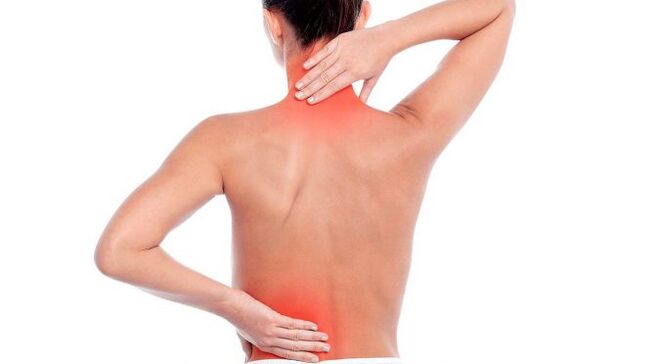In the 18th century, a hot mustard bath was used to treat osteochondrosis. There are more treatments now, from warming ointments to surgery.

Osteochondrosis is a disease that affects more and more young people. The wrong way of life leads to this kind of mistake-less movement, unstable sitting posture, overweight, etc. In the past, people over 45 years old suffered from osteochondrosis, but now they are usually diagnosed at the age of 30.
What is osteochondrosis
When suffering from osteochondrosis, degenerative disc damage occurs. If the disease is not treated, over time, the intervertebral discs will collapse, bone tissue will overgrow, and the spine will lose mobility. In addition, with the degenerative changes of the intervertebral disc, the nuclear content flows out, forming an intervertebral hernia. Herniated discs and hernias can cause severe pain, and novocaine must be used for pain relief.
The content escaping from the intervertebral disc affects the nerve endings of the spine, causing it to be squeezed. This destroys the work of all internal organs. With cervical osteochondrosis, the blood supply to the brain deteriorates, severe migraines occur, and vision decreases. The waist ac can cause pain in the legs-they become numb and swollen, joints and bones are destroyed, and heel spurs may occur. In severe cases, paralysis can occur. Sternal osteochondrosis can cause stomach and heart disease. In some cases, a person develops osteochondrosis in several parts of the spine and requires immediate treatment.
How to treat osteochondrosis
First of all, as the disease worsens, it is necessary to relieve pain. If painkillers do not help, it is necessary to inject Novcaine. The next step is to remove the spine of the book. Bed rest is required for the first 4-6 days of deterioration of osteochondrosis.
The main stages of osteochondrosis treatment are as follows:
- Provide patients with bed rest to reduce spinal pressure.
- Use analgesics (tramadol, Nefou, etc. ) to relieve the pain.
- Use NSAID to eliminate inflammation-diclofenac, ketoprofen, piroxicam, meloxicam, etc.
- If there is significant persistent pain, novocaine or glucocorticoid should be injected. These drugs can effectively help the muscles relax for a long time, thereby reducing pain.
- If osteochondrosis pain interferes with sleep, you need to take sleeping pills.
- If hypertonicity of the back muscles is detected, a muscle relaxant should be prescribed.
- Diuretics are used to relieve spinal cord edema.
- After relieving acute pain, anti-inflammatory ointments and gels can be used. The product contains not only anti-inflammatory and analgesic ingredients, but also collagen hydrolysate. Collagen hydrolysate can restore the damaged intervertebral disc tissue and help get rid of osteochondrosis.
- In order to restore the blood supply to the spine, vasoprotective drugs that can eliminate blood congestion and venotonics and niacin are prescribed. The latter is a vasodilator.
- In advanced cases of osteochondrosis, if paralysis occurs, only surgery can help.
In addition to all the above, the following are effective for the treatment of osteochondrosis:
- Physiotherapy;
- Acupuncture;
- Mud therapy;
- Bathroom.
Special attention should be paid to the influence of gymnastics on osteochondrosis. Gymnastics helps strengthen the back muscles that support the spine. With the help of exercises, if you start exercising on time, you can cure osteochondrosis.




























